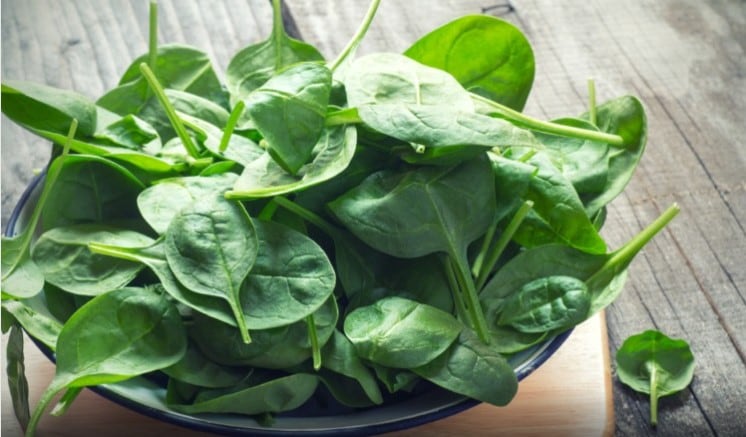Researchers conclude the dietary nitrates present in spinach and beetroot juice are responsible for muscle function improvements pointing to the positive influence of a higher bioavailability of nitric oxide.
“Our study has shown that diets high in nitrate-rich vegetables may bolster your muscle strength independently of any physical activity," explains Dr Marc Sim from Edith Cowan University’s (ECU) Institute for Nutrition Research
"Nevertheless, to optimise muscle function we propose that a balanced diet rich in green leafy vegetables in combination with regular exercise, including weight training, is ideal.
“Muscle function is vital for maintaining good overall health, especially bone strength later in life.”
Green leafy vegetables and beetroot contain high levels of inorganic nitrate and its supplementation may lower blood pressure and possibly reverse vascular dysfunction.
Short‐term physical performance benefits include improved efficiency of mitochondrial respiration and blood flow to active muscle have also been reported in athletic populations
Its role in muscle function and performance has garnered several opinions with animal models suggesting nitrate supplementation improves force production in fast‐twitch muscles.
Short‐term high‐dose nitrate supplementation (around 600–700 milligrams (mg)) has also been reported to enhance skeletal muscle contractile properties in healthy individuals.
Additionally, positive effects on physical capacity may also be maintained for around two weeks if supplementation is continued although higher nitrate intakes on muscle function in the long-term remain uncertain.
Study details
Along with colleagues from The University Western Australia, the team looked at data from 3,759 Australians taking part in Melbourne's Baker Heart and Diabetes Institute AusDiab study over 12-years.
Habitual dietary intake was assessed over the 12 years by obtaining an average [of at least 2 time points, e.g., baseline (2000/2001) and 2004/2005 and/or 2011/2012] from a food-frequency questionnaire.
Nitrate intake was calculated from a validated nitrate database and other published literature. Muscle function was quantified by knee extension strength (KES) and the 8-ft-timed-up-and-go (8ft-TUG) test performed in 2011/2012. Physical activity was also assessed by questionnaire.
They found those with the highest regular nitrate consumption had 11% stronger lower limb strength than those with the lowest nitrate intake. Up to 4% faster walking speeds were also recorded.
"We should be eating a variety of vegetables every day, with at least one of those serves being leafy greens to gain a range of positive health benefits for the musculoskeletal and cardiovascular system," says Dr Sim.
"It's also better to eat nitrate-rich vegetables as part of a healthy diet rather than taking supplements. Green leafy vegetables provide a whole range of essential vitamins and minerals critical for health."
Veg and CV health
The study builds on Dr Sim's previous research into nitrate and muscle function in older women and also adds to growing evidence linking vegetables with cardiovascular health.
Dr Sim said the next step of his research will be exploring strategies to increase leafy green vegetable consumption in the general population.
"We are currently recruiting for the MODEL Study, which examines how knowledge of disease can be used to prompt people in making long-term improvements to their diet and exercise," he adds.
Source: The Journal of Nutrition
Published online: doi.org/10.1093/jn/nxaa415
“Dietary Nitrate Intake Is Positively Associated with Muscle Function in Men and Women Independent of Physical Activity Levels.”
Authors: Marc Sim et al.




